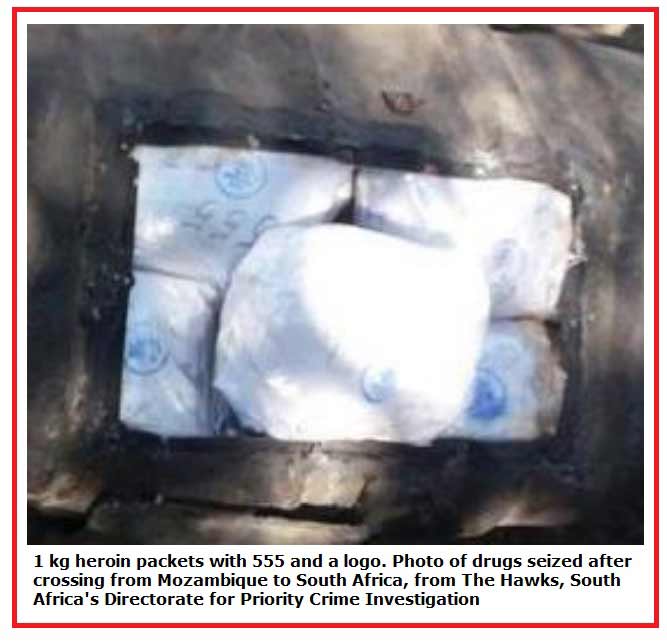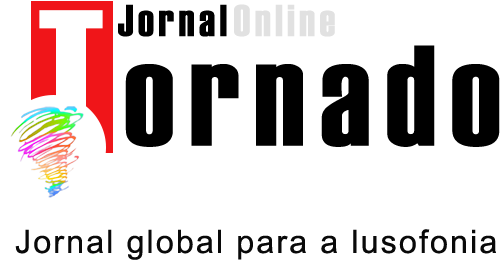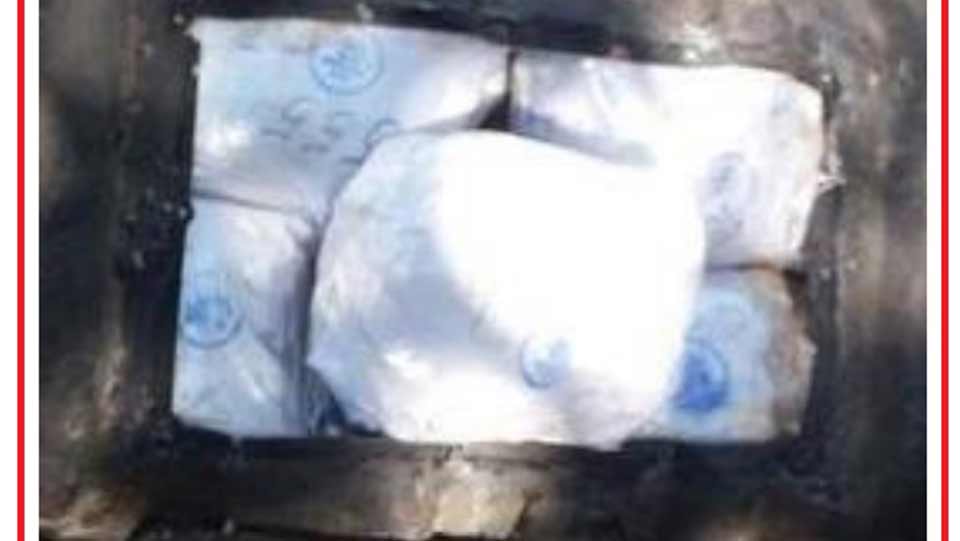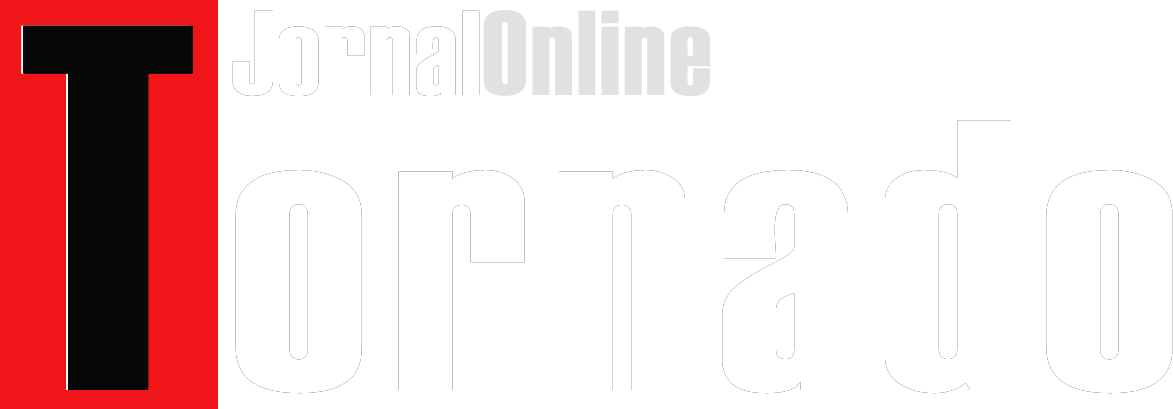Um reputado e respeitado analista americano do terrorismo e do crime organizado disse há uns tempos que o maior cartel mexicano do tráfico de droga se situava no interior da polícia.
E que, acrescentou este velho amigo da equipa IntelNomics/ Jornal Tornado, muitas das operações “anti-droga” da polícia eram guerras entre cartéis pelo controlo do tráfico, de circuitos e de território. Em Moçambique, cuja maior exportação é a heroína, a situação é (guardadas as devidas diferenças, claro) muito semelhante, segundo o documento (datado de Julho 2018) que abaixo se cita e regista. Ignorar este facto quando se aborda a “tragédia de Cabo Delgado” e seus “ataques jihadistas do terrorismo islamista” é um erro estratégico e é a garantia de fracasso. Nem de resto, sem ter este facto em conta, é possível explicar a situação no terreno nem a longa recusa do auxílio estrangeiro de Maputo…
Se a recente evolução (intervenção das tropas ruandesas e aceitação da formação de grupos de forças especiais por Portugal, USA e outros ocidentais) travará ou não a “evolução” de Moçambique para narco-estado e para uma espécie de somalização é a grande incógnita no horizonte daquele país lusófono.
The Uberization of Mozambique’s heroin trade
Joseph Hanlon | Published: July 2018
Department of International Development
London School of Economics and Political Science
Tel: +44 (020) 7955 7425/6252 London
Fax: +44 (020) 7955-6844 WC2A 2AE UK Email: [email protected]
Website: http://www.lse.ac.uk/internationalDevelopment/home.aspx
Acknowledgement:
This research was partly funded and facilitated by the Global Initiative against Transnational Organized Crime, as background for their paper “The Heroin Coast: The political economy of heroin trafficking along the eastern African seaboard”, by Simone Haysom, Peter Gastrow and Mark Shaw. Thanks to Global Initiative for permission to publish the more detailed background paper here.
Abstract:
Mozambique is a significant heroin transit centre and the trade has increased to 40 tonnes or more per year, making it a major export which contributes up to $100 mn per year to the local economy. For 25 years the trade has been controlled by a few local trading families and tightly regulated by senior officials of Frelimo, the ruling party, and has been largely ignored by the international community which wanted to see Mozambique as a model pupil. But the position is changing and Mozambique may be coming under more donor pressure. Meanwhile the global move toward the gig economy and the broader corruption of Mozambican police and civil service makes it easier to organise alternative channels, with local people hired by mobile telephone for specific tasks. Mozambique is part of a complex chain which forms the east African heroin network.
Heroin goes from Afghanistan to the Makran coast of Pakistan, and is taken by dhow to northern Mozambique. There, the Mozambican traffickers take it off the dhows and move it more than 3000 km by road to Johannesburg, and from there others ship it to Europe.
Keywords:
Mozambique, heroin, drugs, transnational crime, smuggling, Whatsapp
Heroin has been one of Mozambique’s largest exports for two decades and the trade is increasing.
Heroin is produced in Afghanistan and shipped through Pakistan, then moved by sea to east Africa and particularly northern Mozambique. From there it is taken by road to Johannesburg, from which it is sent to Europe. This basic route has remained unchanged for 25 years. Estimates vary from 10 to 40 tonnes or much more of heroin moving through Mozambique each year. With an export value of $20 million per tonne, heroin is probably the country’s largest or second largest export (after coal). It is estimated that more than $2 mn per tonne says in Mozambique, as profits, bribes, and payments to senior Mozambicans.
Heroin arrives on dhows 20-100 km off the coast. The Mozambican role is to take it from the dhows, move it by small boat to the coast and then by road to warehouses, and finally take it by road 3000 km to Johannesburg, South Africa. The 10-40 t/y estimate is from dhows only, and further significant amounts of heroin also arrive in containers of other imports, particularly at the northern port of Nacala.
Until recently, the trade was carried out by south-Asian-origin families based in the north of Mozambique and was tightly regulated by the most senior figures in Frelimo.
The trade has been well known since 2001 when an article was published in Metical, and it said heroin was then Mozambique’s largest export. Frelimo regulation means there have been no drug wars between the trading families, and little heroin remains in Mozambique. With one exception (the United States in 2009-10), the international community has chosen to ignore the regulated heroin trade – other issues ranging from natural gas to corruption have been seen as more important.

Heroin production is increasing in Afghanistan. But tighter control of transit through eastern Europe is moving the trade to southern routes, and more controls in Kenya and Tanzania has moved sea landings south to northern Mozambique. The trade appears to be increasing significantly. This, in turn, led to an investigation by the Geneva-based Global Initiative against Transnational Organized Crime, just published: “The Heroin Coast: The political economy of heroin trafficking along the eastern African seaboard”, by Simone Haysom, Peter Gastrow and Mark Shaw. The report argues that the heroin trade has “political protection” and that “in Mozambique, we find a tight integration between ruling party figures and traffickers.”
The report continues: “individuals in Frelimo have become implicated in criminal activities, and … the party’s own system for generating funds relies on a lack of the rule of law.”
Despite the heroin trade being well known to embassies, it was only on 1 June 2010 that US President Barack Obama designated Mohamed Bachir Suleman (MBS) as a “drugs kingpin”, making it illegal for US citizens, US companies, and businesses which operate in the US to conduct financial or commercial transactions with him or three of his businesses. MBS is a major businessman and trader, and he works with at least three other south-Asian origin trading families.
They use their own facilities and staff and mix illegal and legal commerce. MBS is believed to still control a large part of the heroin trade through Mozambique, but his position and that of linked families may have diminished.
On the other hand, there is a move in East Africa which reflects the global trend of Uber and Airbnb, away from using established business networks and warehouses, to a looser system of freelance workers controlled via WhatsApp and BlackBerry. Meanwhile petty corruption within Mozambique has become so endemic that the heroin trade can run on bribes and no longer needs political patrons. This leads to what one of my sources described as a move to “disorganised crime”, which appears to be handling much of the new increase in heroin trade.
This working paper is based on the background paper on Mozambique written for Global Initiative by Joseph Hanlon. This working paper has five sections.
The first section looks at MBS, the biggest heroin trader, medium-size traders, and at political patronage. The second section is about the national and international politics of Mozambique’s regulated heroin trade. The third section sets out what is known about the physical heroin trade and movements within Mozambique. The final sections look at the recent growth of a parallel unregulated trade in Mozambique and at the global context of a criminal gig economy.
Mozambique’s own drug baron
President Joaquim Chissano was the guest of honour at the wedding of the second son of Mohamed Bachir Suleman (MBS) on 19 April 2001. An article in the biggest weekly newspaper, Savana (27 April 2001), described the wedding was as “sumptuous” and said there were 10,000 guests from all over the world.
For a country less than a decade out of war, this was massive and ostentatious spending. MBS was also known as a major contributor to Frelimo. He is one of Mozambique’s most prominent and wealthiest businessmen and his wealth did not come only from importing refrigerators and washing machines for his Kayum Centre.
Also in 2001, I was briefed by an international drugs control official that his business, Grupo MBS, was the main heroin trader in Mozambique.
Links to MBS were passed on to Armando Guebuza when he was elected President in 2004. He twice publicly visited MBS’s Maputo Shopping Centre (22 June 2006 and for the official opening 8 May 2007). The $32 mn complex was then the largest in Mozambique, and Guebuza praised it a model of private investment. MBS was reported to have made a $1 million contribution to President Armando Guebuza’s 2009 electoral campaign. But those links may have been through Guebuza’s children.
In 16 November 2009 and 25 January 2010 cables, Todd Chapman, Chargé d’Affaires at the US Embassy in Maputo, alleged that MBS “has direct ties to President Guebuza and former President Chissano” and that MBS is the coordinator of heroin going through Mozambique and perhaps southern Tanzania.
Then on 1 June 2010, US President Barack Obama designated MBS as a “drugs kingpin”, making it illegal for US citizens, US companies, and businesses which operate in the US to conduct financial or commercial transactions with him or three of his businesses, Grupo MBS, Kayum Centre and Maputo Shopping Centre.
The US Department of the Treasury stated that “Mohamed Bachir Suleman is a large-scale narcotics trafficker in Mozambique, and his network contributes to the growing trend of narcotics trafficking and related money laundering across southern Africa. Suleman leads a well-financed narcotics trafficking and money laundering network in Mozambique.” In the next section we point out that this was a unique intervention, even though the international community knows about the heroin trade.
The close link between MBS and Chissano is said to reflect a complex relationship. The heroin trade was regulated at the highest level. Chissano is said to have regularly met personally with MBS, and probably with the heads of the other heroin trading families.
MBS was publically identified as a major donor to Frelimo. It has been widely assumed that there was an agreement to regulate the trade. There have never been drug wars between the heroin families and no convictions – and in the past two decades, no arrests – of senior figures in the heroin and hashish trades, and no seizures of heroin passing through the regulated trade.
The Ministry of Interior, police and customs receive their commissions and assist the trade. Frelimo receives a substantial amount of money for operating costs and election expenses, and one assumes some members of the Frelimo leadership personally receive a part.
Chissano had been Frelimo head of security since 1966, and he had the personal contacts needed to organise and regulate the trade.
There is no direct evidence of high level regulation, and any witnesses to such meetings are unlikely to speak out. It is speculated that part of the deal is that the heroin is intended for international transit and the traders agree that little stays in Mozambique.
In the early 2000s, the military housing zone in central Maputo became known as “Columbia” because drugs were so readily available, and some the children of the elite because heroin users.
This was widely publicised and then suddenly heroin became less available. Did Chissano tell MBS to stop selling locally? Clearly something happened, because cocaine and particularly crack are still readily available, suggesting lack of regulation of the cocaine trade.
Other players
Although MBS is a big man in Mozambique, he is part of a chain running from the Indian subcontinent. Under MBS, Global Initiative identifies three linked families with businesses in Nacala …..
The Uberization of Mozambique’s heroin trade
Exclusivo Tornado / IntelNomics



